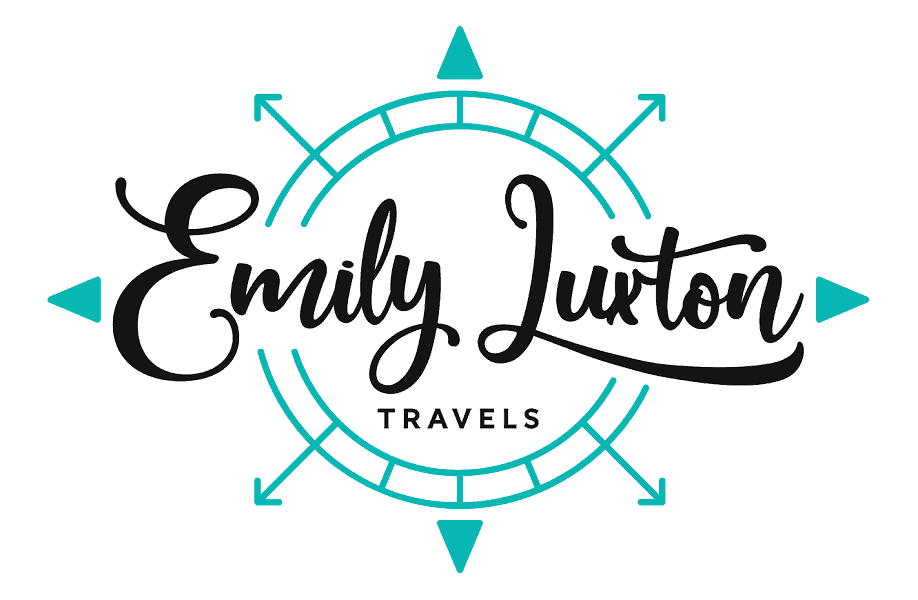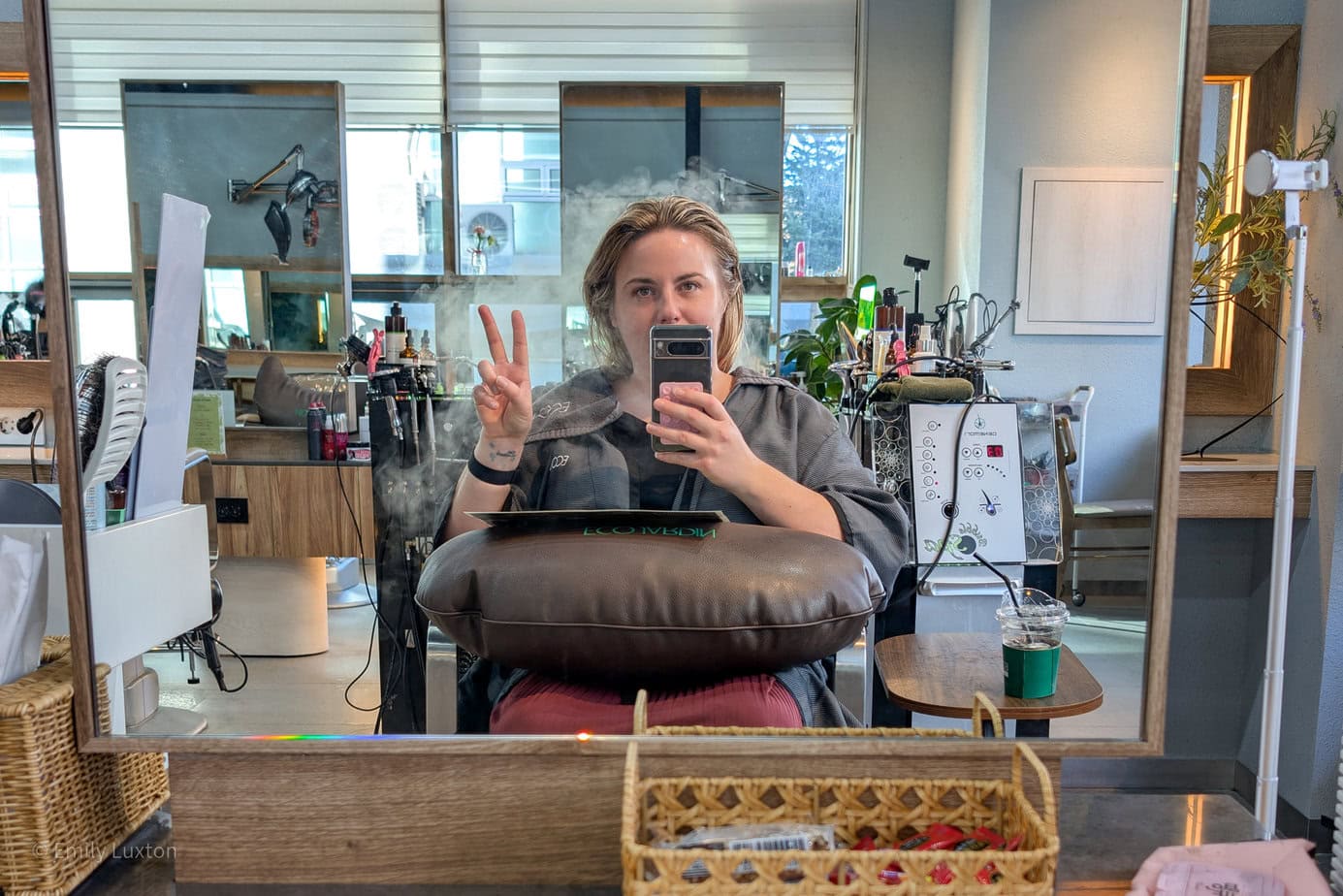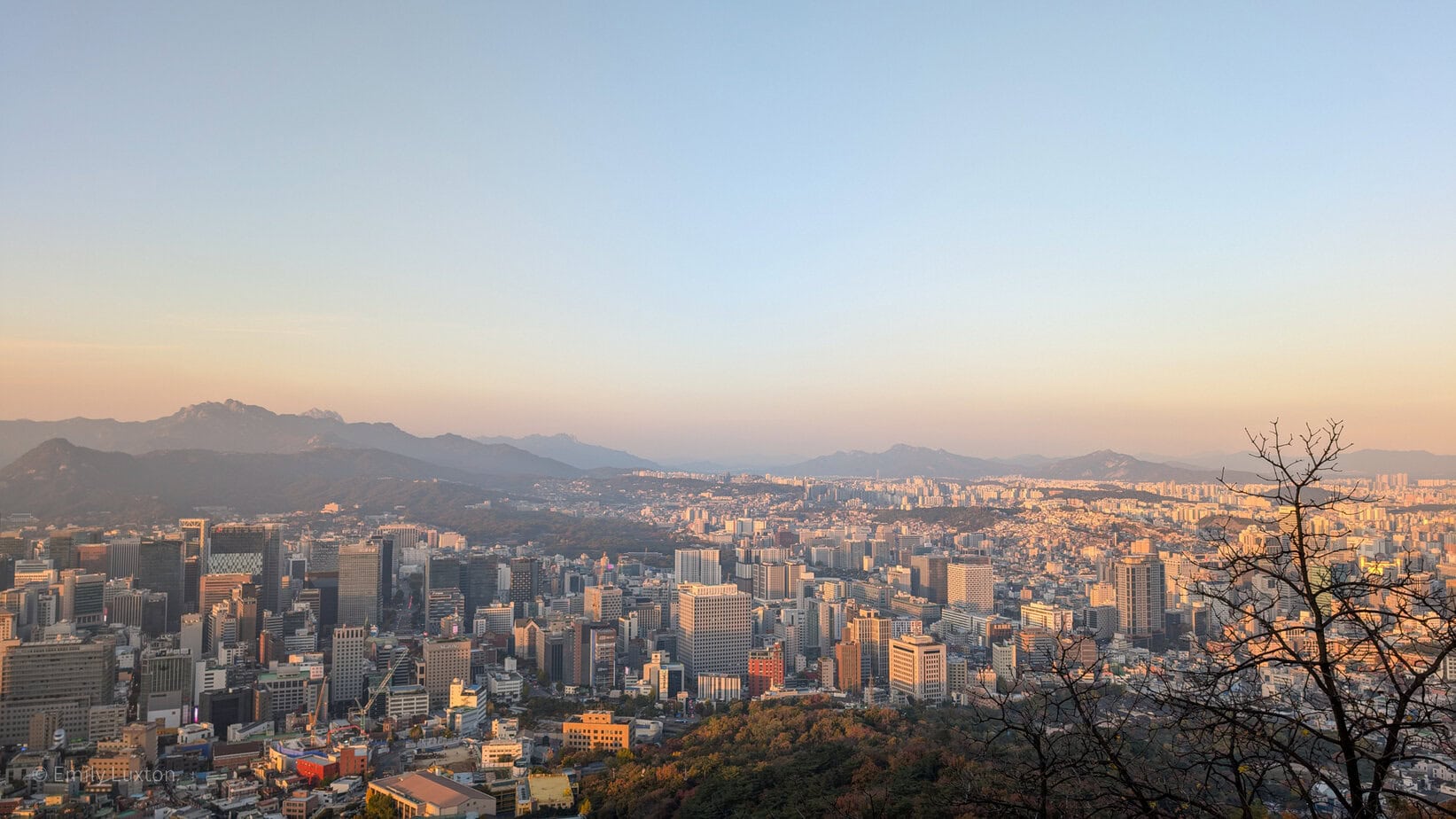Some posts on this site contain affiliate links. If you book or buy something through these links, I earn a small commission (at no extra cost to you). Take a look at my privacy policy for more information.
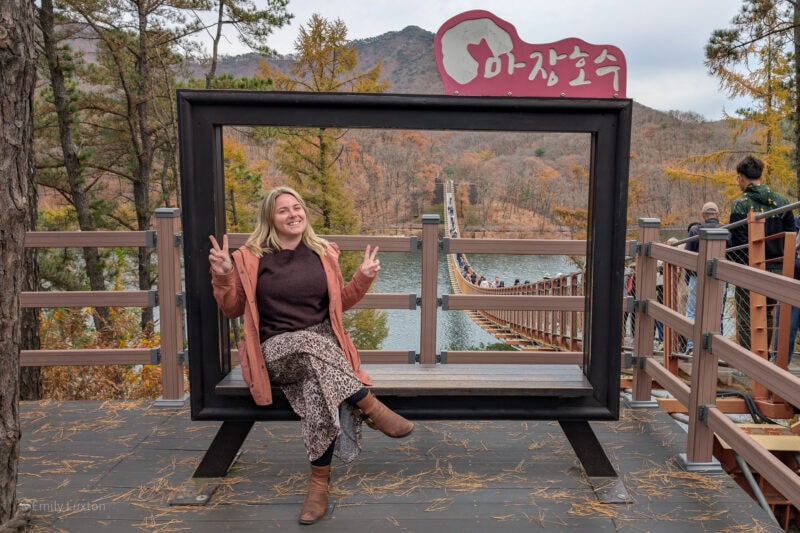
Everything you need to know to be prepared for solo female travel in South Korea – including safety tips and travel advice…
Even after a decade of travelling solo, I still get nervous about visiting a new country. Especially when I have no idea what to expect, as was the case when I recently spent a few weeks travelling solo to South Korea for the first time.
Very quickly after arriving, though, I discovered that South Korea is by far the safest and easiest Asian country that I’ve visited on my own! Getting around was so simple (I’m still in awe of their public transportation system), I always felt safe, and people I met were so friendly and happy to help. It’s a GREAT country for travelling solo, but it still pays to do your research and be prepared!
So – here’s my tried-and-tested solo female travel guide to South Korea: from someone who’s been travelling the world alone for nearly a decade! I’ve covered safety tips, issues to be aware of, advice for getting around, and more. I hope it helps!
If you have any questions at all, feel free to get in touch via the comments or on socials (I’m @em_luxton on Instagram). Safe travels…
South Korea for Solo Female Travellers: Pros and Cons
Of all the Asian coutnries I’ve visited, I think South Korea is the easiest to visit as a solo female traveller. I felt safe the whole time I was there, getting around was always super straightforward, and I had an absolute blast on my trip! These are my pros and cons:
Pros
- It felt very safe.
- Getting around was easy! The public transport system is reasonably priced, easy to figure out, and runs like clockwork most of the time! Most trains/buses announce stops in English as well as Korean, making things even easier.
- The food is AMAZING!
- South Korea’s beauty scene is awesome, and there are some fun beauty experiences to try, like the viral scalp treatment!
- It’s a rich, diverse country with loads to see and do – and there’s genuinely something for all travellers here.
Cons
- South Korea isn’t the cheapest place to travel – prices were generally higher than many other Asian countries.
- There are hostels in most major cities and tourist destinations, but they’re perhaps not quite as common as other parts of the world.
- In my experience, it wasn’t quite as easy to meet fellow travellers.
- Dining alone isn’t always easy, as a lot of meals (especially Korean BBQ) are designed for sharing.
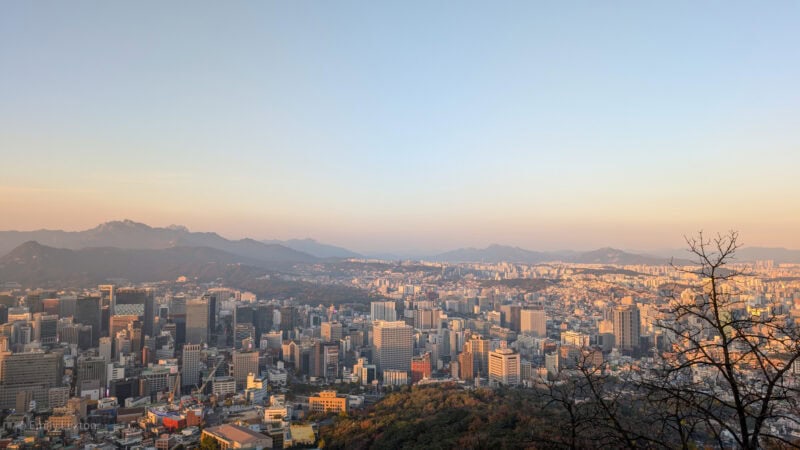
Is South Korea Safe for Solo Female Travellers?
This is a BIG topic, so I’ve written a separate post answering this question in much more detail. CLICK HERE to read it. Otherwise, here’s a quick summary of what you need to know:
- South Korea is generally very safe for travellers.
- Crime rates are low, and Seoul (the capital) ranked 7th on the 2025 State of Travel Insurance Safest Destinations report.
- You should still take all the usual safety precautions. Take care of valuables in busy areas, avoid walking alone late at night, etc.
- Emergency numbers: 119 for ambulance/fire or 112 for police.
- Tourists can dial 1330 to reach the Korea Travel Helpline, which can connect them with the tourist police.
- The political situation between North and South Korea is fraught, but there’s no active conflict (at the time of writing). Keep an eye on the news and the UK Government’s travel page for South Korea to stay abreast of any updates.
READ MORE: Is South Korea Safe for Solo Female Travellers?
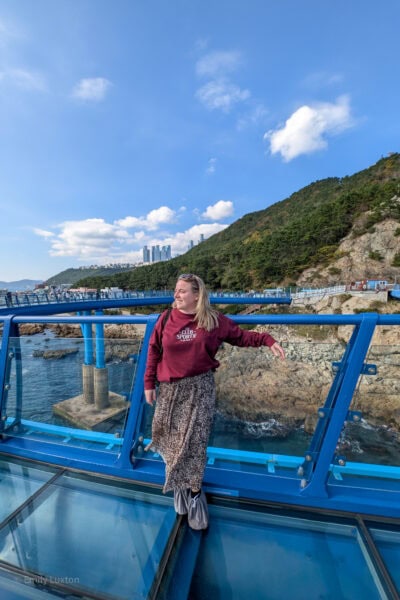
Tips for Getting Around South Korea
The public transport system in South Korea is wonderful! It was one of my favourite things about the country: everything worked so efficiently, and it was always straightforward to figure out where I was going.
In major cities like Seoul and Busan, the subway systems are efficient, cheap, clean, and safe. There are also excellent bus networks in every city – and the whole country is linked by a fantastic system of trains and buses. Don’t shy away from public transport, as most of the time it’s the cheapest and fastest way of getting anywhere.
Google Maps doesn’t work: Download Naver
Google Maps doesn’t work well in South Korea (or at all in some cases). Instead, download the local equivalent: Naver Maps. I highly recommend you download the app and set up an account before you fly to Korea. This way, the app should default to English, and you can make sure everything is up and running before your trip.
In my experience, Naver Maps was much more accurate than Google Maps has ever been – especially for planning journeys on public transport. The timings were correct (almost to the second!) and the app pings you with a notification when your train or bus is approaching the stop you need!
FYI: You’ll need either a local SIM card or an eSIM with prepaid data to use Naver Maps. I’ve covered this further on down the page – but personally, I prefer an eSIM. Holafy offer unlimited data eSIM plans for South Korea – get a 5% discount with code EMILYLUXTON.
Get a T-Money or Travel Card
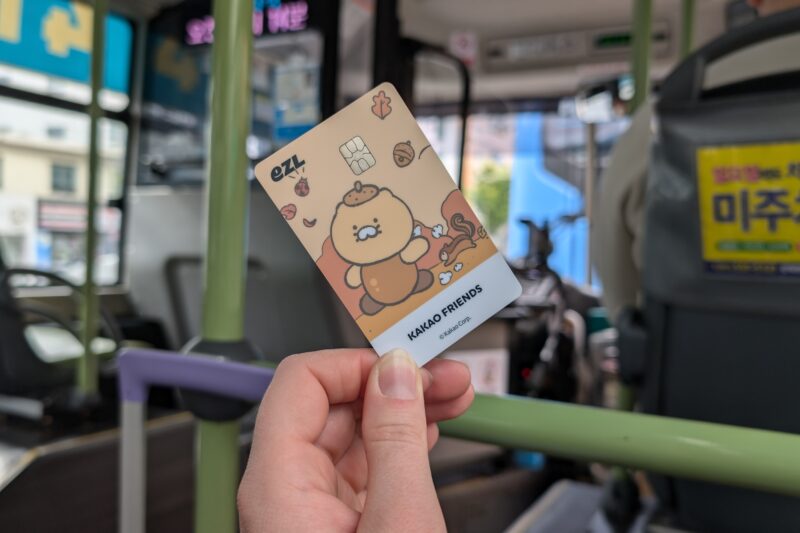
The most convenient way to pay for Korea’s public transport is with a travel money card. These work similarly to an Oyster Card in London: you top them up, then use them to tap in and out of the subway or bus, so you can pay for each journey on the go. You can use the same card across South Korea.
This will save you money, as journey prices are slightly lower compared with buying individual tickets. It’s also much more convenient: queuing up to buy a ticket at the machine for every single journey will get tedious pretty fast! And on many buses, you can’t pay with cash at all anymore – so a travel card really is the best option.
There are two main options: the T-Money Card is more widely available and better-known. There’s also the EZL Card, which does the same thing but is sold at different stores. I ended up buying the EZL Card and can confirm it works exactly the same as the T-Money Card. It also gets you a discount at Lotte Duty Free stores.
Where to buy the Travel Card in South Korea:
You can buy them in the Transit Centre at Incheon Airport. There are also vending machines where you can buy the tourist-friendly Korea Tour Card. which is a travel card but also has some other handy features. The vending machines are pretty straightforward and self-explanatory.
If, like me, you miss your chance to buy a travel card at the airport, you can also buy one at most convenience stores throughout Korea, including GS25 and 7-Eleven. The added bonus is that these stores sell cards with unique (and often very cute) designs.
Alternatively, you can buy your T-Money Card in advance of your trip and pre-load it with a 10,000 KRW balance through Klook. Click here for more details.
Topping Up Your Travel
You can top them up at the ticket machines in the train stations. FYI – you can only pay in cash. The machines can be switched into English, so they’re pretty easy to use: simply place your travel card on the reader, add how much you want to top up, and pay. The machine will talk you through the steps so you can’t really go wrong!
Is there Uber in South Korea?
Yes, there is Uber in South Korea – but usually only in major cities. It was definitely available in Seoul, Busan, and Gyeongju on my trip, but smaller towns and rural areas may not have Uber yet.
There is another app you can use called Kakao T (it used to be Kakao Taxi), which can be used to call local taxis. You need a Korean bank account to pay online, or you can pay the driver directly (most accept both cash and credit card). More info here.
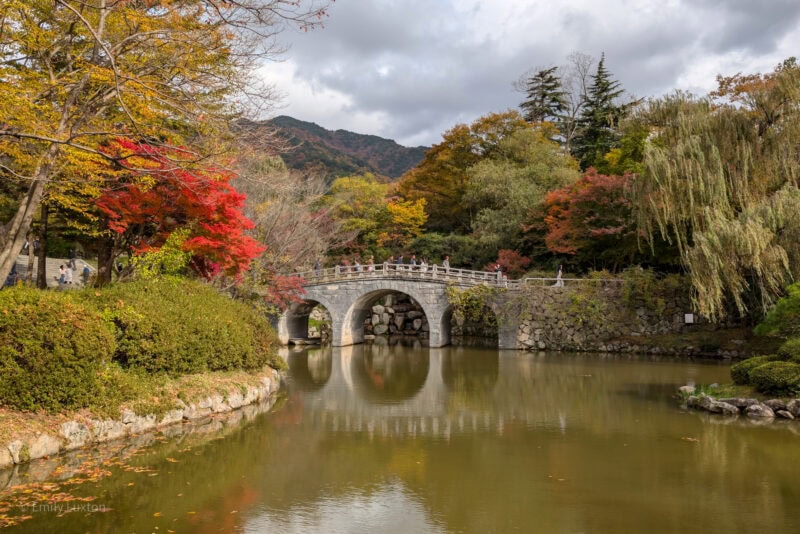
Tips for Solo Travellers in South Korea
Get a Local SIM or eSIM
Internet access makes travelling in South Korea much easier. It’s handy for using Naver maps to plan your journeys (see above), calling Ubers, and using translation apps when speaking with locals or trying to decipher signs.
You can buy a prepaid LG SIM card at Seoul airport, with prices starting from ₩6,500 (around £3.50 / $4.50) for 24 hours. A 10-day SIM card with unlimited data costs ₩35,000 (around £19 / $24).
An eSIM may work out cheaper (depending on the length of your trip). Even if not, it’s much more convenient, as you can install it straight onto your phone and use it alongside your normal SIM – without needing to go into a shop.
Airalo: From £26.50 / $32 (unlimited data, 10 days). Use code EMILY9237 to get £2.50 / $3 off your first purchase.
Nomad: From £4.50 / $5 (1GB, 7 days). Use code EMIL96SV to get $7 off your first purchase.
Holafly: From £6 / $6.90 (Unlimited data, 1 day). The plans are better value when you buy for longer: eg, 7 days of unlimited data is £24 / $$29.90. Use code EMILYLUXTON to get 5% off.
READ MORE: Holafly vs Nomad Comparison
Apps to download ahead of your trip
- Naver Maps – see above.
- Google Translate – you can use the camera function to live-translate any Korean text (for example, a restaurant menu or ticket machine).
- XE Currency – useful for doing on-the-go conversions.
- Uber – even if you already have it, make sure you set up all the safety functions (such as an emergency contact) ahead of your trip.
Where to Stay as a Solo Female Traveller
Hostels – great for meeting other travellers, but you’ll have to share a dorm room.
Capsule hotels – these are a brilliant solution for solo travellers. You’ll get your own private pod and a locker to store your valuables. If you’re visiting Busan, I highly recommend Gwanganli Hotel 1 (watch my video review here).
Female-only Guesthouses – guesthouses are a great option if you want budget-friendly accommodation without staying in a hostel. They’re smaller than hotels and usually have a cosy, family-run vibe. There are some female-only guesthouses in most cities, which are ideal if you’re a bit nervous about travelling on your own as a woman.
Homestay – immerse yourself in Korean culture by staying with a local family at a homestay. These often include a home-cooked meal and can be a great insight into Korean life.
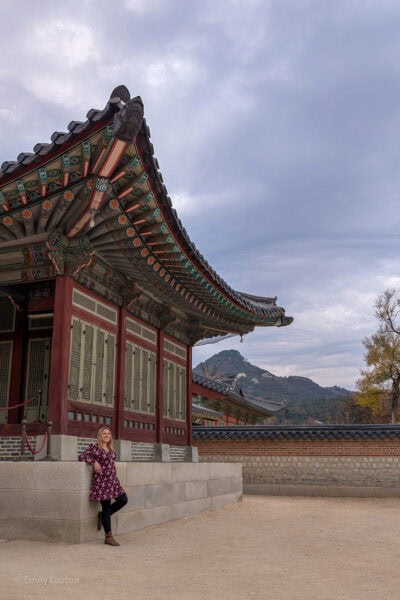
How to Meet Other Travellers in South Korea
The best way to meet fellow travellers and make friends is usually by staying in a hostel. There are hostels in most major cities, although they’re less prevalent than in some other countries. If you want a social vibe, look for hostels that host tours, events, and classes – or find a party hostel if that’s your thing!
Another great way to meet travellers is by booking tours. I did quite a few day trips and city tours on my trip, and they were a great way to meet other travellers (both foreigners and local Koreans). Food tours and cooking classes are particularly good, as they mean you have people to dine with (I always find dining solo can get lonely on longer trips). On one tour, our guide made sure to group all the solo travellers up at lunch so that we could share a Korean BBQ!
Recommended Tours & Day Trips
Top Tip: I found Klook was the best website for finding and booking tours in South Korea, both in terms of range and prices.
- DMZ Tour (de-militarised zone) from Seoul (I did this tour and would happily recommend – watch my video here)
- Genuine Korean Cooking Class, Seoul
- Absolute Seoul Pub Crawl Experience, Hongdae and Itaewon (Seoul)
- Tram Pedal Challenge, Seoul
- Haeundae Sky Capsule, Gamcheon & Yacht Day Tour, Busan
- Gyeongju UNESCO World Heritage Day Tour, from Busan
How to Dress?
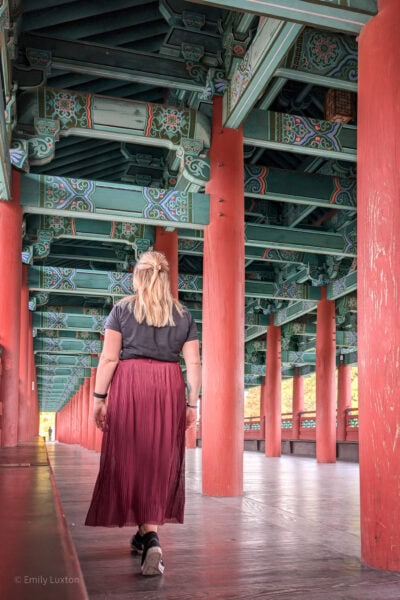
South Korea is a fairly modern and liberal country. It embraces modernity, but is also very rooted in tradition. On the whole, you can probably dress more or less as you would at home. That said, it’s recommended to dress somewhat modestly, especially when visiting temples or traditional villages.
No one seems to bat an eyelid at shorts, mini dresses, and short skirts (even very short skirts). But showing cleavage is a little frowned upon, so avoid anything too low-cut. I felt like I got a lot of unwanted (and uncomfortable) attention when I wore anything even remotely low-cut! I’d also recommend bringing a scarf or shawl to cover your shoulders when wearing sleeveless tops.
Appearance and fashion can be quite a big deal here, so the “scruffy backpacker” look that you might see in South East Asia (Chang vest tops and elephant pants, that type of thing) won’t really work if you want to impress in South Korea! And you’ll definitely want at least one “dressy” outfit to wear to nice bars and restaurants.
The Main Takeaways
- South Korea is, in general, a very safe country to travel, but you should still take the same safety precautions you would take anywhere else.
- Get an eSIM so you have internet access throughout your trip.
- Download Naver Maps in advance to plan journeys with ease.
- Buy a travel card (T-Money or EZL) in advance, or get one at a convenience store when you arrive. It will save you money on public transport and make paying for buses and the subway so much easier.
Solo Female Travel Resources
Airalo – Buy a pre-paid eSIM for your destination to get online without roaming fees. Use code EMILY9237 to get £2.50 off your first purchase.
UK Government’s Travel Advice – All the most up-to-date advice about entry requirements and visas for all destinations (for British citizens).
Fit For Travel – The NHS travel advice site. Search by destination to see what vaccinations are needed and check for any health issues you need to be aware of.
Safety Wing Travel Insurance – The best insurance for long-term travellers, digital nomads, and backpackers.
Hostelworld – The best place to search for hostels & budget accommodation.
Booking.com – The best booking site for all types of accommodation. It usually has the lowest prices and the widest range.
Get Your Guide – My favourite website for booking tours. It has a fantastic range of options all over the world.
Discover Cars – Easily search for and book car hire around the world. Includes ratings/reviews for each car hire company.
XE Currency App – Simple currency conversions (works offline once synced) Apple | Android
Maps.Me – Similar to Google Maps, except it works offline (once you’ve downloaded the map). Apple | Android
Is there anything else you’d like to know about visiting South Korea as a solo female traveller? Let me know in the comments below and I’ll get back to you!
